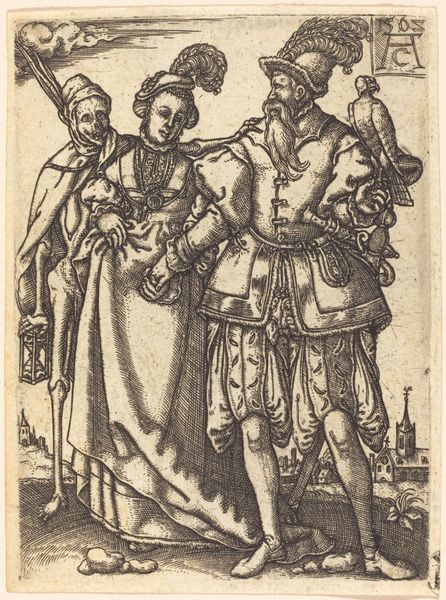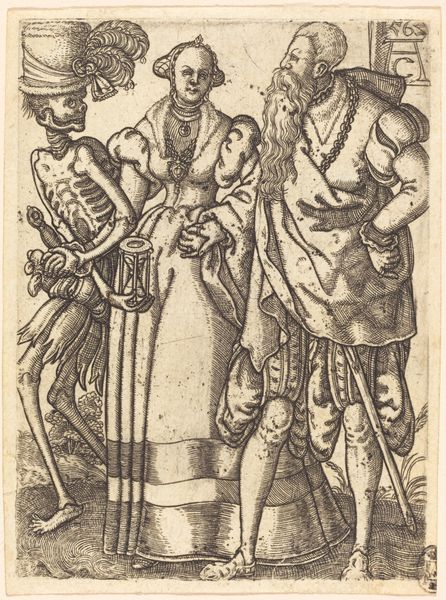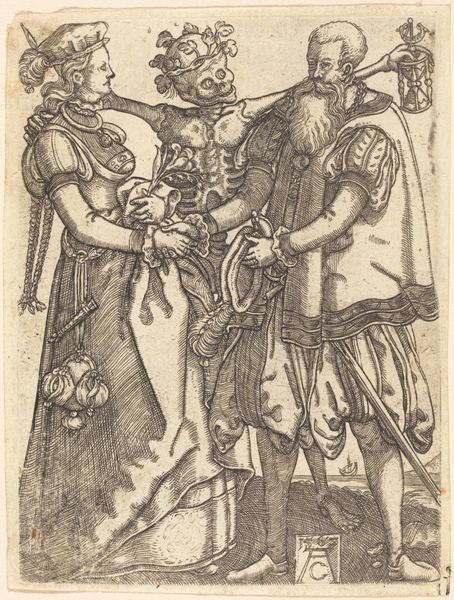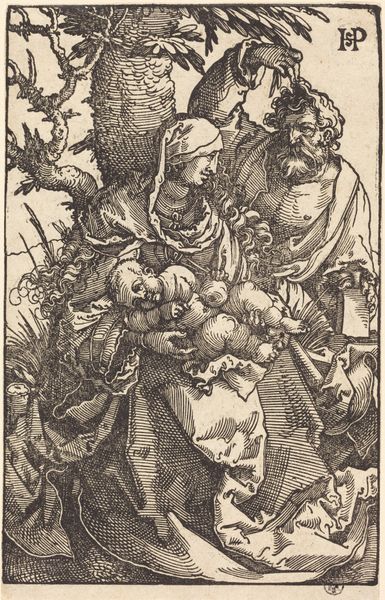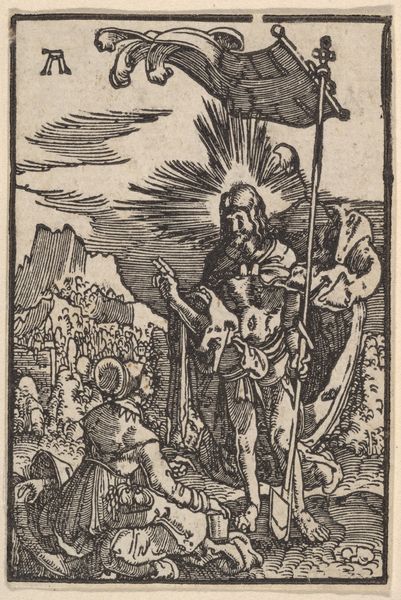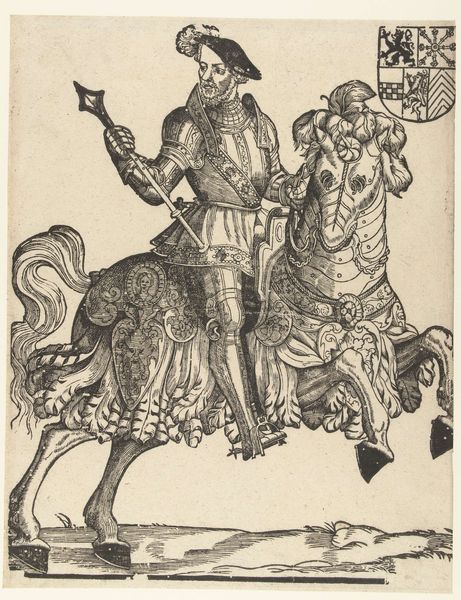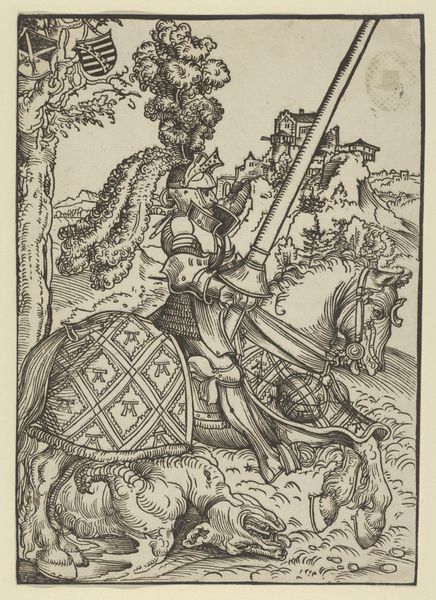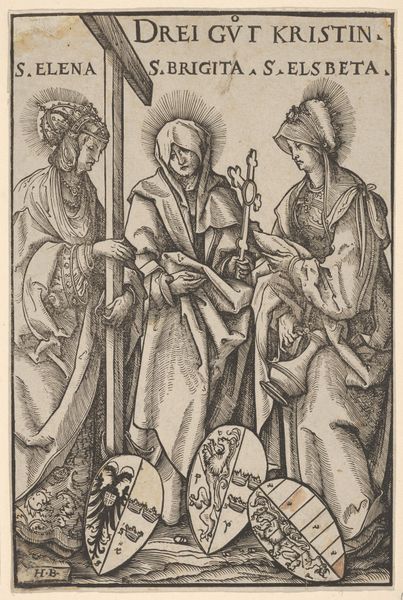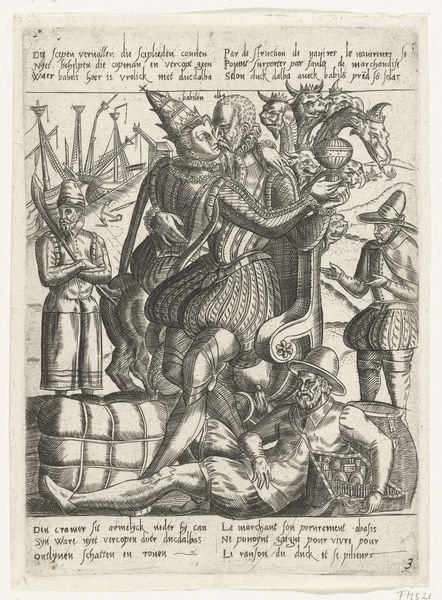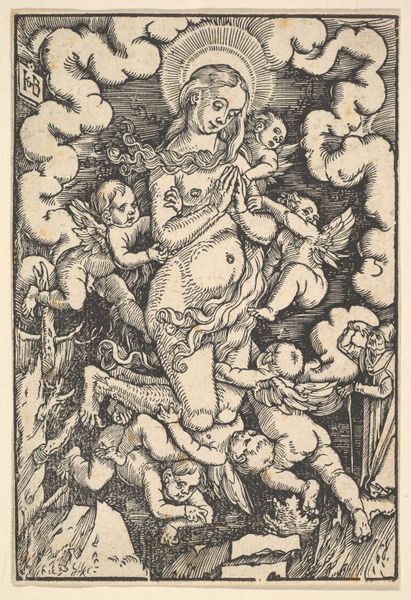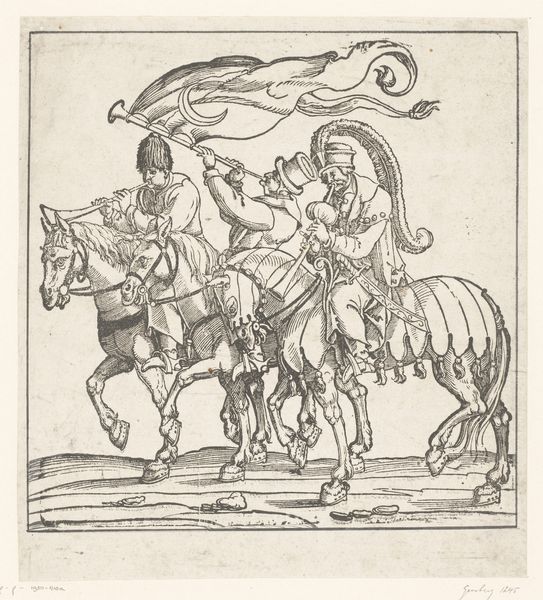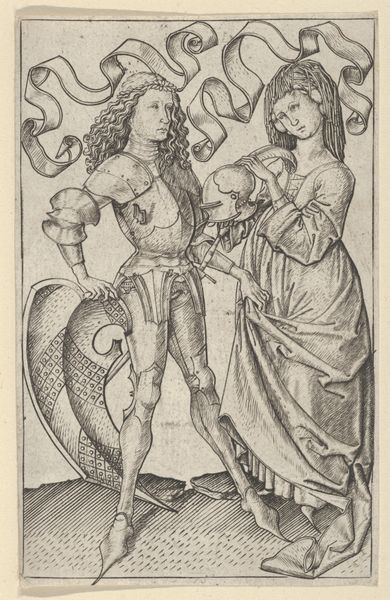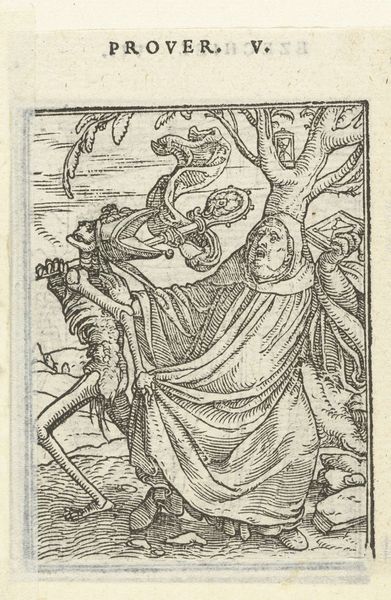
drawing, print, ink
#
drawing
#
allegory
#
narrative-art
#
pen drawing
# print
#
pen illustration
#
pen sketch
#
figuration
#
ink
#
line
#
history-painting
#
northern-renaissance
Copyright: National Gallery of Art: CC0 1.0
Editor: Here we have Allaert Claesz.'s "Dance of Death V" from 1562, rendered in ink as a print. I'm struck by the starkness of the composition – Death, personified, leads a king and queen away. What societal anxieties might have led to such a direct depiction? Curator: It's powerful, isn't it? Consider the 16th century: plague, religious wars, and immense social upheaval were realities. The "Dance of Death," or "Danse Macabre," as it was also known, wasn't just about mortality; it was a potent commentary on social hierarchies and the illusion of power. Notice how Death, clad as a jester, mocks the finery of royalty. Does this suggest anything to you about the target audience for these prints? Editor: That’s insightful. It suggests that such prints could have been distributed fairly widely, if not cheaply, perhaps reaching a broader public to deliver an uncomfortable but universal message. Death does not care if you are the king or the beggar. Curator: Exactly. These images leveled social standing in the face of the inevitable. Prints, unlike paintings commissioned by the elite, circulated more freely, shaping public discourse on death and social equality – or rather, inequality. It questions whether power offers genuine protection. Does the queen's crown shield her from mortality? Editor: I see. It's a potent message delivered through reproducible imagery, impacting public consciousness on power dynamics. That puts this in perspective. Thank you. Curator: And thank you. Reflecting on the interplay of art, death, and society is always a worthwhile endeavor.
Comments
No comments
Be the first to comment and join the conversation on the ultimate creative platform.
